By Eva Zirker
How do you imagine an author?
Where are they writing? At a large wooden desk at the middle of a bright office? In a café serving £7 oat milk lattes? Or rather in a cramped apartment, with wallpaper peeling off and a dish-stack higher than last year’s income? What are they wearing? Where did they study? Did they study?
Chances are your imagination falls into one of two categories. On the one hand, there is the idea of opulence: the wishful thinking that old money instantly fills the bank account of anyone who picks up a pen with a right idea in mind. On the other, there is the romanticisation of precarity: the author who does it all for the art. I have yet to meet a landlord who accepts passion for rent. So, who can actually afford to write?
A select few might enjoy the first scenario while lifting up the heavily disputed figure of an average advance on a novel. Depending on the source, it ranges anywhere from several thousand pounds to high five-figure amounts and lies far from reality for most. Yet for most authors, the romanticisation of their precarity might be little more than a coping mechanism for the harsh reality of literary production. To the majority, even affording ‘A Room of One’s Own’ is not an easy feat, especially in a cultural epicentre like London.
Although writing fellowships, author residencies, or cultural promotion programmes are valuable frameworks, they realistically only serve a few. However, even to those who can stand the constant competition, the demand to produce literary masterpieces is crippling creative endeavour. Writing does not happen predictably or on demand. This especially applies to people with disabilities, caring responsibilities, or similar circumstances. Their work does not always reflect traditional conceptions of productivity, despite the expectations often held within a stipend or residency.
It is true that writing as a profession requires a substantial amount of passion to balance out the hardships. The 2023 Author’s Guild report shows that half of all full-time authors earn below the US minimum wage from their writing – which is equivalent to a mere £5.83 an hour. Attending readings, selling merchandise, giving workshops, or even sponsorships can provide necessary second sources of income, or third, or fourth. Consequently, authors need to market themselves. Their livelihood becomes inseparable from their performance as a writer and – now more than ever – as themselves. Often, the opportunity to market oneself is the reimbursement an author can expect when their writing has, for instance, been selected from an open call. But it is this exact individualisation that hinders systemic, substantial change on the long run. Recently, the 2023 writer’s strike has shown that acting collectively provokes change. Even though writing for film and television differs from literary writing in many ways, it has emphasised that without writers, much work within the cultural sector simply comes to a halt.
To amplify diverse voices in publishing, we must not only ask whose voices are to be amplified, but also who is unable to write and why. We must ask how to promote more flexible structures that provide for more than a select few. We must acknowledge that clout pays rent as much as passion does. Only then can we make writing a less precarious occupation. We need to remember that authors lie at the core of publishing – as people, not as a commodity. After all, without them, we would only be publishing notebooks.
Sources:
Bründel, H. K. (n.d.). ein weißer mann erklärt mir, dass ich tippfehler gemacht habe [online] Available at: https://www.goethe.de/ins/se/de/kul/lir/pro/tip.html [Accessed 12 Apr. 2024].
De Muirier, J. (n.d.). Der Text und der Auftrag. [online] Available at: https://www.goethe.de/ins/se/de/kul/lir/pro/auf.html [Accessed 12 Apr. 2024].
Kavouras, N. (n.d.). Zwischen dem Aufkleben von Briefmarken. [online] Available at: https://www.goethe.de/ins/se/de/kul/lir/pro/brf.html [Accessed 12 Apr. 2024].
Landau-Donnelly, F. (n.d.). Schreibräume – Gedanken über den Zusammenhang von öffentlicher Literaturförderung und tropfenden Wasserhähnen. [online] Available at: https://www.goethe.de/ins/se/de/kul/lir/pro/ged.html [Accessed 12 Apr. 2024].
Los Angeles Times. (2023). Striking at the Heart of Hollywood. [online] Available at: https://www.latimes.com/entertainment-arts/business/story/2023-04-10/wga-writers-strike-story-collection [Accessed 17 Apr. 2024]
Oevermann Ignatia, N.-F. (2024). Impostor – Gespenster. [online] Available at: https://www.goethe.de/ins/se/de/kul/lir/pro/img.html [Accessed 12 Apr. 2024].
The Authors Guild. (2023). Key Takeaways from the Authors Guild’s 2023 Author Income Survey. [online] Available at: https://authorsguild.org/news/key-takeaways-from-2023-author-income-survey/#:~:text=Median%20Author%20Income [Accessed 12 Apr. 2024].
Uzun, F. (2024). Ayağını Yorganına Göre Uzat – oder das Wagnis, die eigenen Spielräume zu erweitern. [online] Available at: https://www.goethe.de/ins/se/de/kul/lir/pro/txt.html [Accessed 12 Apr. 2024].

